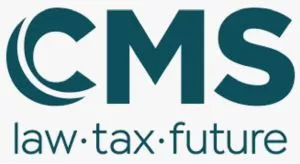- within Finance and Banking topic(s)
- in European Union
- in European Union
- in European Union
- in European Union
- with readers working within the Oil & Gas industries
- within Wealth Management, Media, Telecoms, IT and Entertainment topic(s)
Introduction
On 6 March 2025, the Commission de Surveillance du Secteur Financier (the CSSF) released a communication on a new upcoming evolution in the electronic VISA stamp procedure for the prospectus and offering document (the Prospectus) of UCITS, Part II UCIs, SICARs and SIFs (each a UCI) applicable from 1 April 2025. The declared objective of the new system is to simplify the administrative processes and enhance its efficiency. While an advantage to market participants will be provided, the responsibility of the governing body of the UCI will be enhanced to ensure compliance with regulatory requirements and uphold strong investor protection standards.
As announced in the press release, on 20 March 2025, the CSSF published on the eDesk the Guidelines on the e-identification procedure for UCI Prospectus (the Guidelines) including a list of amendments to the prospectus which do not legally require an ex-ante authorisation and review by the CSSF, the details on the new procedure, a technical guidance on the IT application and a FAQ section.
This publication aims at summarising the key elements of the Guidelines.
I. Approval of a new UCI
The existing process for approving new UCIs through the eDesk approval platform will remain unchanged.
II. Changes to the approval process for amendments to an existing UCI Prospectus
The Guidelines establish two categories:
- (i) a list of amendments to the Prospectus which do not legally require authorisation or prior review by the CSSF, which can therefore be incorporated directly into the Prospectus at the time of the e-identification process; and
- (ii) a list of amendments which require a review by the CSSF prior to the Prospectus e-identification process following the usual authorisation or non-objection process via email.
The Guidelines also provide a non-exhaustive list of material changes that have an impact on the notification requirements to investors.
If the Prospectus includes both amendments that require prior review and those that do not, all amendments must be shown in track changes in the Prospectus submitted to the CSSF for approval and the changes requiring prior review must be highlighted (in colour or other format).
The CSSF will adopt a risk-based approach and may request at its discretion documents or additional explanations to conduct an ex-post analysis of changes, whether or not subject to its prior review.
i. List of changes not subject to prior review by the CSSF
| For both UCITS and non-UCITS |
|---|
| Share classes set up, their name change, merger or feature changes |
| Amendment to the Initiator if indicated in the Prospectus |
| Cost and fees |
| Non-material changes to an existing (sub)-fund |
| Non-material changes to the general part of the Prospectus |
| Non-material ESMA or other European or international institutions-related updates to ensure compliance with Q&As, guidelines and recommendations |
ii. List of changes or requests subject to prior review by the CSSF (non-objection, approval or authorisation)
| For UCITS | Fon non-UCITS |
|---|---|
| Set up of a new fund (including the conversion into a UCITS) | Set up of a new fund (including the conversion into a non-UCITS) |
| Set up of new sub-funds | Set up of new sub-funds or/and label authorisation/registration (for sub-funds) |
| Changes relating to the rules or instruments of incorporation, the managers and/or the governing body's composition or certain other key features of an existing fund | Changes relating to the rules or instruments of incorporation, the managers and/or the governing body's composition or certain other key features of an existing fund |
| Change of service provider(s) | Change of service provider(s) |
| Mergers | Mergers |
| Material changes within one or more existing (sub)-fund(s) to the name, the investment policy or strategy, the SFDR annexes, currency, frequency of NAV calculation, establishing of side-pockets introduction of performance fees or change to the applicable conditions or models | Material changes within one or more existing (sub)-fund(s) to the name, the investment policy or strategy, valuation & external valuer, investor eligibility, risk profile, duration and currency, frequency of the NAV calculation, arrangements for dealing with complaints (if offered to retail investors), material changes to the SFDR annexes, introduction of performance fees or change to the applicable conditions or model and other material changes |
| Share classes (e.g. new ETF share classes or newly added performance fees) |
iii. Non-exhaustive list of common material changes
Material changes to a UCI are significant alterations to its fundamental characteristics that could impact investor decisions. These changes require careful consideration to determine if they would cause an investor to reconsider their investment. The UCI should analyse the impact of any potential change on its investors by comparing their interests and situation before and after the change.
| Common material changes |
|---|
| Investment objective and policy, e.g. change in investment strategy or risk profile |
| Change in management company, portfolio manager or investment adviser |
| Increase in management fees or other expenses or change in the methodology for the calculation of performance fees |
| Merger or change in custodian bank or other service providers |
| Other Material Changes, e.g. creation of a side pocket, changes to the characteristics of a share class, changes to conditions in the Prospectus related to the NAV |
| Changes in the SFDR classification or to the name of the (sub-)fund falling under the scope of the ESMA Guidelines on fund's names or material change in the SFDR criteria |
The CSSF mandates a minimum notification period of one month for informing investors of material changes. During this period, investors have the right to request redemption or repurchase of their units without charges. The UCI may also offer unit conversion into another UCI or sub-fund, free of charge.
The CSSF may grant derogations to these requirements upon a substantiated request, such as unanimous investor consent or when a shorter notification period is sufficient. The CSSF may request notice for amendments that do not legally require authorisation or prior review on a case-by-case basis.
III. E-identification procedure
When any required review has been completed, or if no prior review is required, or at the final stage of the approval process for new UCIs, the Prospectus can be submitted for e-identification through two distinct channels:
- Using the S3 API interface employed by the CSSF for file exchange, or
- Through an online form accessible on the CSSF's eDesk platform starting from 1 April 2025.
The new e-identification process (replacing the current visa stamping procedure) will require the filing of all amendments through eDesk, following two steps:
- Completion of the form provided by the eDesk application. In this form, all amendments made to the Prospectus, including those reviewed and approved by the CSSF and those not requiring CSSF review, must be summarized.
- Submission of the final, clean version of the Prospectus (without track changes) via the eDesk e-identification Prospectus application. Any additional necessary documents must be attached.
- Upon submission, the CSSF will allocate a unique identification number to the files (YYYY/NNNNNN-NNNNNN-N-PC) and record the e-identification date.
IV. Transitional period
From 1 April 2025, prospectuses and offering documents must be submitted for e-identification through the CSSF's eDesk e-identification application.
There is a transitional period until 16 April 2025 for documents that were filed and had an e-file procedure for the visa stamp initiated before 31 March 2025. These will continue to follow the previous visa stamp procedure.
However, documents filed before 1 April 2025 but without an e-file procedure for the visa stamp must be submitted via the eDesk e-identification application. Any changes filed after 31 March 2025 must also be submitted through the eDesk e-identification application, with the completion of the eDesk form required.
The content of this article is intended to provide a general guide to the subject matter. Specialist advice should be sought about your specific circumstances.






